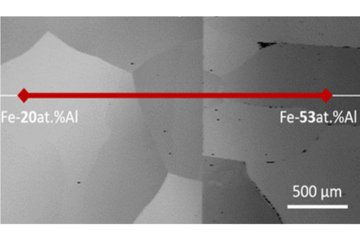All genres
1.
Journal Article
Multiple slip dislocation patterning in a dislocation-based crystal plasticity finite element method. International Journal of Plasticity 100, pp. 104 - 121 (2018)
2.
Journal Article
Low cycle fatigue in aluminum single and bi-crystals: On the influence of crystal orientation. Materials Science and Engineering A: Structural Materials Properties Microstructure and Processing 668, pp. 166 - 179 (2016)
3.
Journal Article
Effects of strain amplitude, cycle number and orientation on low cycle fatigue microstructures in austenitic stainless steel studied by electron channelling contrast imaging. Acta Materialia 87, pp. 86 - 99 (2015)
4.
Talk
Effects of strain amplitude, cycle number and orientation on low cycle fatigue microstructures in fcc materials studied by Electron Channeling Contrast Imaging. TMS 2015 - 144th Annual Meeting & Exhibition, Orlando, FL, USA (2015)
5.
Poster
Systematic Investigation of the Influence of Strain Amplitude, Orientation and Cycle Number on the Dislocation Structures Formed during Low Cycle Fatigue. MSE 2014, Darmstadt, Germany (2014)
6.
Poster
Systematic and efficient investigation of the influences on the dislocation structures formed during low cycle fatigue in austenitic stainless steel. Euromat 2013, Sevilla, Spain (2013)
7.
Thesis - PhD
Effects of strain amplitude, cycle number and orientation on low cycle fatigue microstructures in austenitic stainless steel and aluminum. Dissertation, RWTH Aachen, Aachen, Germany (2015)











